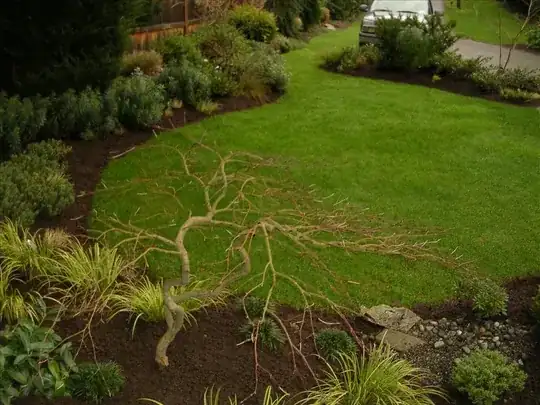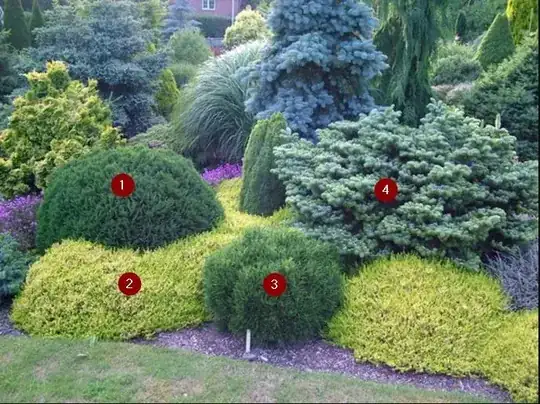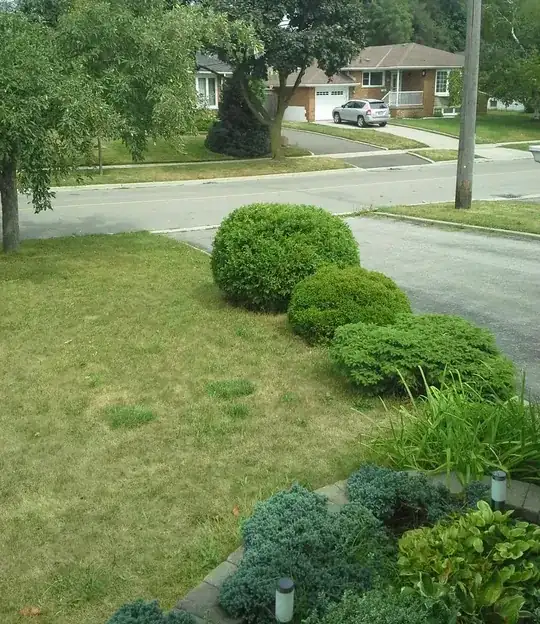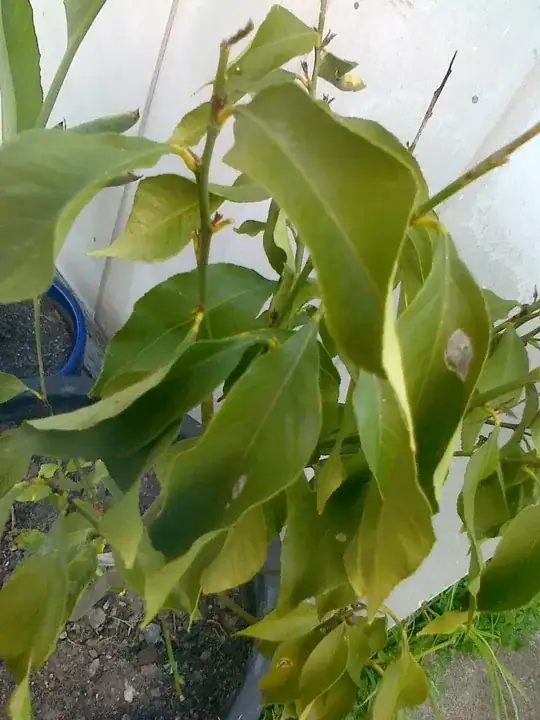You are saying you like the first picture and the second is the actual picture at your home? Minime You are feeling and seeing the problem. The need to unify. We were taught that humans are only comfortable seeing 3 things. That is how composition is taught with any art, paintings or landscape the principles are the same.
There are a number of compositional elements; texture, form, rhythm, color, shoot and a few more I am not coming up with at the moment. If someone just crams all kinds of plants into a space they had better know about composition. The top picture is a bit chaotic my opinion, but whoever did this landscape was thinking about composition. They pulled the blue of the conifers throughout the picture as well as the yellow. There is rhythm and form helping to pull this off. And just barely.
Those 'foo foo' shrubs in your yard need to be transplanted (only during the winter and don't expect success). Lawn size is highly over rated. You do need to consider large, raised plant beds and a very defined lawn area. We can also help with the health of your lawn.
People go to the nursery to buy one of this and one of that. I try to explain always get 5 or 7 of the same species. One or two specimen plants for focal points. All landscapes need a 'skeleton' planting, sometimes called a foundation planting and not because plants are planted against the foundation. A skeleton planting pulls the entire landscape together and allows plantings of perennials, annuals and focal points. When someone knows what they are doing the landscape can be quite exciting without being overwhelming. 



